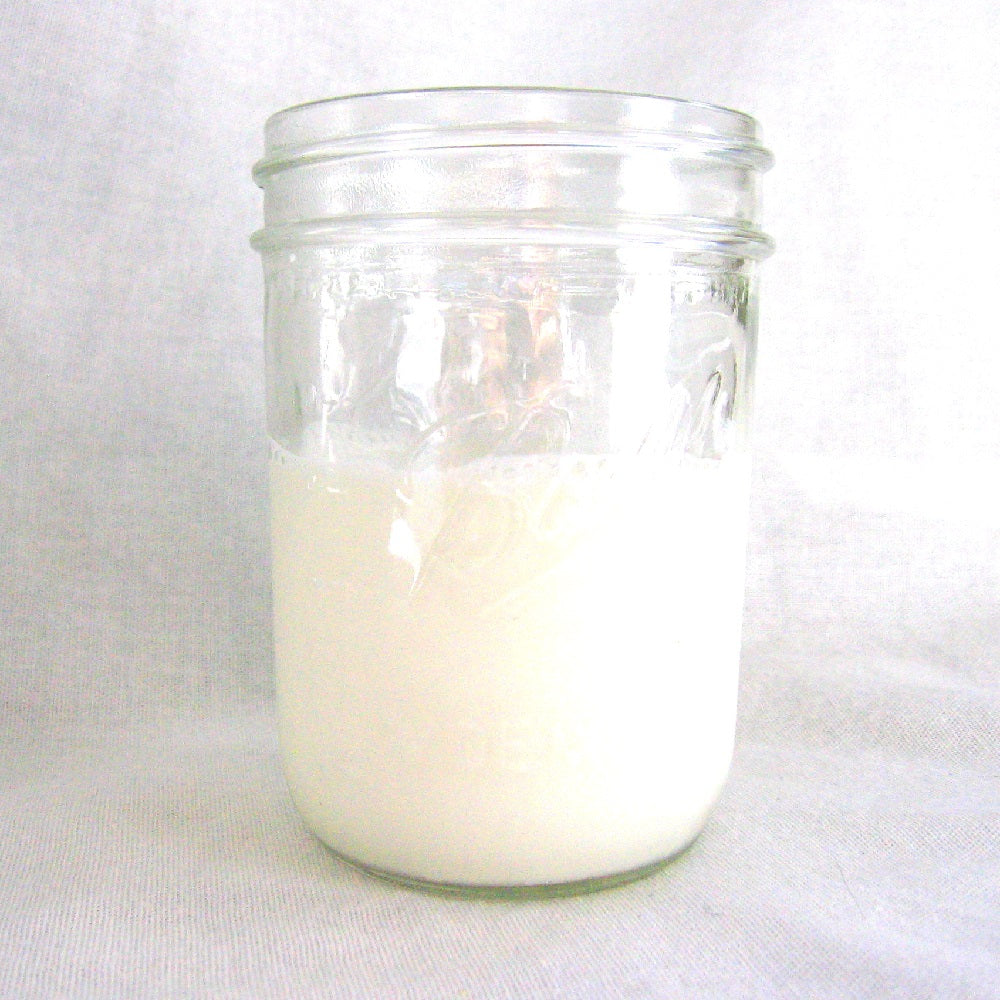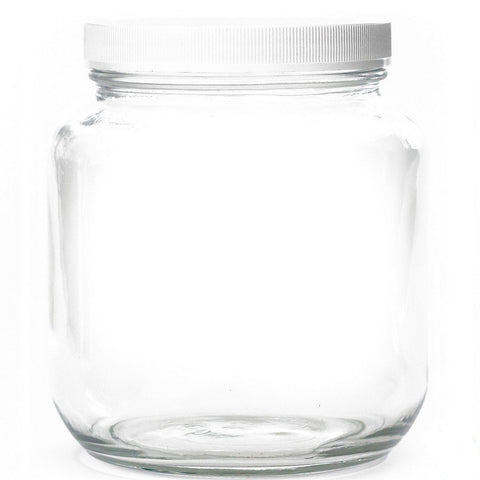
There’s a lot of discussion on how to get the best kefir.
What’s the ideal temperature? The ideal milk? The ideal duration?
Those are all important questions, but milk kefir grains are like living creatures and they will adapt to any environment if they are allowed to.
What really makes milk kefir grains happy is when they have space to get all the nourishment they need from the milk.
When you have happy grains, you get a healthy, balanced smooth kefir.
There are 3 simple requirements needed to give the grains space and make the best kefir possible:
- A high ratio of milk to grains
- Small batches or
- Wide jars
A high ratio of milk to grains

A high ratio of milk to grains simply means more milk and less grains. Starting out you may need to use 1/2 to 1 cup of milk per tablespoon of grains. But once they adapt to the new environment, 1 tablespoon can usually do about 2-4 cups.
This can vary quite a bit due to the temperature, milk, bacteria balance and space. Some grains are just naturally slow and that’s fine.
The best grains tend to make kefir slow and steady. They are bacteria rich and less yeasty. Some of the worst grains I’ve seen are those that ferment excessive amounts of milk. They are usually tiny and yeasty. This is not a good trait and your kefir is typically not as healthy or balanced.
Using more milk per the amount of grains helps the grains get all the lactose and minerals they need without harsh competition. When there’s too much competition for resources, the yeast (which is faster and more opportunistic) tends to get ahead and then you end up with yeastier grains.
Do small batches

Many people think that as long as you stick to a good ratio of grains to milk, you can easily scale up and make large quantities of milk.
Unfortunately, with milk kefir, that's not really true.
They do much better with small batches.
The reason is that milk kefir grains rise to the top during the ferment where all the grains clump together and fight for important milk resources.
So in a large batch, what you have it a ton of grains up top and a huge reservoir of milk below them which they don’t have direct access to. So they fight like crazy between themselves and some may starve a bit. When things get tough, the yeast comes in and takes over. And when grains get yeasty they rise to the top even faster. So subsequent batches will find your grains racing faster and faster to the top, becoming even more yeastier in the process. So the health continues to decline.
Not only that, the consistency of the kefir is poor due to high fermentation at the top and low fermentation at the bottom.
We always grow our milk kefir grains in small batches to prevent over-fermentation and better balance.
We have found that the grains and kefir start to suffer going above 2-3 cups of milk in a normal sized jar. Batches larger than a quart (or liter) is not recommended for optimal health.
When using a normal mason jar, we recommend about .5 to 1 tablespoon of grains to about 2-3 cups of milk for optimal kefir and happy grains. Beyond that, the quality starts to go down.
Use wide jars

If you plan to do larger batches, you need a wide jar to create smooth kefir and healthy grains.
If you do milk kefir in a skinny jar, it's just as bad as having too many grains. What happens is that when the grains rise to the top of a skinny jar, they clump on the surface and the battle royale for nutrients occurs all at the top. The top over ferments and the bottom is barely fermented.
You will know that is happening if you see pockets of whey forming at the top before the bottom of the jar.

Notice the whey forming directly under the grains. When you see that, you know you have too many grains or the jar is too skinny. The whey should always form on the bottom first.
And just like using too many grains, they become yeastier. Which actually means that they also rise to the surface even quicker (due to the carbonation by product of yeast) and then they spend even more time fighting on the surface and become yeastier. And so the grain health and kefir quality goes down.
Wider jars mean they spread out better on the surface and have better access to the milk below them. Which ultimately means a better, thicker consistency for the kefir. As well as a more balanced kefir.
With wider jars you can do larger batches if desired as well and the grains won’t suffer.
If you have a skinny jar, then 1-2 cups may be all you can do. But if you have a wide jar, you can do 3-4 cups without much issue. Maybe more if its wider.
Bottom line
The basic method to grow healthy grains and great tasting balanced kefir is space. Which means more milk and less grains. Small batches and/or wider jars.
If you are a large family or you are making kefir for others, try doing multiple small batches or find a jar as wide as possible to accommodate larger amounts of grains.
What's your perfect ratio of grains to milk? Do you use a wide jar?



Comments
Yemoos Nourishing Cultures
Montez- Thanks for your kind words! :) Technically yes, you can drink too much. In fact any food in excess is hard on the body (more so when done for an extended period). Even Matcha tea in excess can sometimes cause liver inflammation! A recent study also showed kefir to offer more health benefits when done a few times a week, vs daily. We recommend to listen to your body and drink what feels right for that day. I find every day and week to be different as far as my cravings etc – your body is very smart at communicating what it needs. Just as most people wouldn’t eat 4 cups of yogurt a day, it’s the same common sense with kefir or any fermented food as well.
Marcia – Wide mouth jars are typically 3 in (76 mm) inner and 3 3⁄8 in (86 mm) outer diameter. Usually you can spot one by the fact that the opening will be similar in width to the rest of the jar, instead of tapering to a smaller opening.
Sasha – We have some recipes in the works that we look forward to sharing with everyone soon! Thanks for the ideas! :)
April 24, 2019
Montez W Walker
Love your emails. Was wondering can a person drink too much milk kefir?
Thanks…
April 23, 2019
Marcia
What is the dimension range for what would be considered wide mouth jars?
April 23, 2019
David’s Sasha
Great
Why don’t you share some great kefir recipes
Like kefir ice cream
Etc
April 24, 2019
Leave a comment